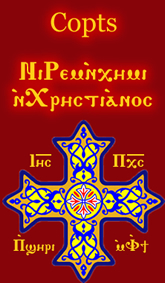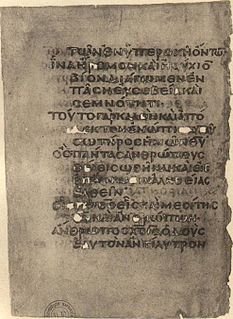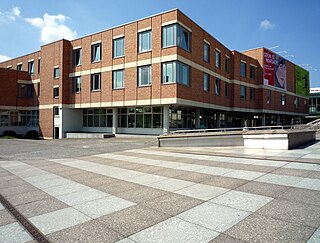
The Codex Sinaiticus, designated by siglum א [Aleph] or 01, δ 2, or "Sinai Bible", is a fourth-century Christian manuscript of a Greek Bible, containing the majority of the Greek Old Testament, and the Greek New Testament written in uncial letters on parchment. It is one of the four great uncial codices. Along with Codex Alexandrinus and Codex Vaticanus, it is one of the earliest and most complete manuscripts of the Bible, and contains the oldest complete copy of the New Testament. It is a historical treasure, and using the study of comparitive writing styles (palaeography), it has been dated to the mid-4th century.

The Gutenberg Bible was the earliest major book printed using mass-produced movable metal type in Europe. It marked the start of the "Gutenberg Revolution" and the age of printed books in the West. The book is valued and revered for its high aesthetic and artistic qualities as well as its historical significance. It is an edition of the Latin Vulgate printed in the 1450s by Johannes Gutenberg in Mainz, in present-day Germany. Forty-nine copies have survived. They are thought to be among the world's most valuable books, although no complete copy has been sold since 1978. In March 1455, the future Pope Pius II wrote that he had seen pages from the Gutenberg Bible displayed in Frankfurt to promote the edition, and that either 158 or 180 copies had been printed.

The Peshitta is the standard version of the Bible for churches in the Syriac tradition, including the Maronite Church, the Chaldean Catholic Church, the Syriac Catholic Church, the Syriac Orthodox Church, the Malabar Independent Syrian Church, the Syro-Malankara Catholic Church, the Mar Thoma Syrian Church, the Assyrian Church of the East and the Syro-Malabar Church.
Landsbókasafn Íslands – Háskólabókasafn is the national library of Iceland which also functions as the university library of the University of Iceland. The library was established on December 1, 1994 in Reykjavík, Iceland, with the merger of the former national library, Landsbókasafn Íslands, and the university library. It is the largest library in Iceland with about one million items in various collections. The library's largest collection is the national collection containing almost all written works published in Iceland and items related to Iceland published elsewhere. The library is the main legal deposit library in Iceland. The library also has a large manuscript collection with mostly early modern and modern manuscripts, and a collection of published Icelandic music and other audio. The library houses the largest academic collection in Iceland, most of which can be borrowed for off-site use by holders of library cards. University students get library cards for free, but anyone can acquire a card for a small fee. The library is open for public access.

The Bibliothèque Mazarine, or Mazarin Library, is located within the Palais de l'institut de France, or the Palace of the Institute of France, at 23 quai de Conti in the 6th arrondissement, on the Left Bank of the Seine facing the Pont des Arts and the Louvre. Originally created by Cardinal Mazarin as his personal library in the 17th century, it today has one of the richest collections of rare books and manuscripts in France, and is the oldest public library in the country.

The State Library of Württemberg is a large library in Stuttgart, Germany, which traces its history back to the ducal public library of Württemberg founded in 1765. It holds c. 4 million volumes and is thus the fourth-largest library in the state of Baden-Württemberg. The WLB owns an important collection of medieval manuscripts as well as one of the largest Bible collections in the world.

There have been many Coptic versions of the Bible, including some of the earliest translations into any language. Several different versions were made in the ancient world, with different editions of the Old and New Testament in five of the dialects of Coptic: Bohairic (northern), Fayyumic, Sahidic (southern), Akhmimic and Mesokemic (middle). Biblical books were translated from the Alexandrian Greek version.

Codex Coislinianus designated by Hp or 015, α 1022 (Soden), was named also as Codex Euthalianus. It is a Greek uncial manuscript of the Pauline epistles, dated palaeographically to the 6th century. The text is written stichometrically. It has marginalia. The codex is known for its subscription at the end of the Epistle to Titus.
Minuscule 658, ε 1215, is a Greek minuscule manuscript of the New Testament, on parchment. Palaeographically it has been assigned to the 12th or 13th century. The manuscript has complex contents. Scrivener labelled it by 636e.
Minuscule 659, ε 1216, is a Greek minuscule manuscript of the New Testament, on parchment. Palaeographically it has been assigned to the 12th century. The manuscript has complex contents. Scrivener labelled it by 637e.
Minuscule 661, ε 179, is a Greek language minuscule manuscript of the New Testament, on parchment. Palaeographically it has been assigned to the 11th century. The manuscript has complex contents. Scrivener labelled it by 639e.
Lectionary 232, designated by siglum ℓ232 is a Greek manuscript of the New Testament, on parchment. Palaeographically it has been assigned to the 14th century. Scrivener labelled it by 226evl. Some leaves of the codex were lost.

The Kupferstichkabinett, or Museum of Prints and Drawings, is a prints museum in Berlin, Germany. It is part of the Berlin State Museums, and is located in the Kulturforum on Potsdamer Platz. It is the largest museum of graphic art in Germany, with more than 500,000 prints and around 110,000 individual works on paper.
Minuscule 880, ε526, is a 15th-century Greek minuscule manuscript of the New Testament on paper. It has survived in complete condition.
Minuscule 883, Θε55, is a 15th-century Greek minuscule manuscript of the New Testament on paper. It has not complex contents.
Huon d'Auvergne is an early modern romance-epic written in Franco-Italian, a hybrid literary language. Huon d'Auvergne has remained largely unedited, with only selected segments appearing in print. Far better known is the Tuscan prose version by Andrea da Barberino, dated to the early fifteenth century. One of the first, if not the first, work to incorporate Dante Alighieri's The Divine Comedy with direct quotes from Hell, the romance-epic's language has kept it from wide appreciation. The poetic form, language, and narrative content of the four extant witnesses demonstrate how a synoptic, or simultaneous, online edition of the multiple manuscripts can fulfill the need for reliable texts as well as research about the tradition and trajectory of its exemplars. An edition project is underway as of January 2013.
The Hamilton Psalter is an illustrated manuscript that consists of Psalms 1-150 and twelve canonical Odes. It is most notable among Byzantine manuscripts due to being one of the few surviving bilingual manuscripts from the Byzantine era, written primarily in Greek and Latin. There’s no sole author of the manuscript but it’s in fact a compilation of multiple scribes' writing. Its name is derived from being a part of the Hamilton Collection, arranged to be purchased from Alexander Hamilton in 1882 by Wilhelm von Bode and Karl Friedrich Lippmann for the Royal Library in Berlin. It is currently housed within the Staatliche Museen Preussischer Kulturbesitz, Kupferstichkabinett Berlin.

Gary A. Rendsburg is a professor of biblical studies, Hebrew language, and ancient Judaism at Rutgers University in New Brunswick, New Jersey. He holds the rank of Distinguished Professor and serves as the Blanche and Irving Laurie Chair of Jewish History at Rutgers University (2004–present), with positions in the Department of Jewish Studies and the Department of History.









